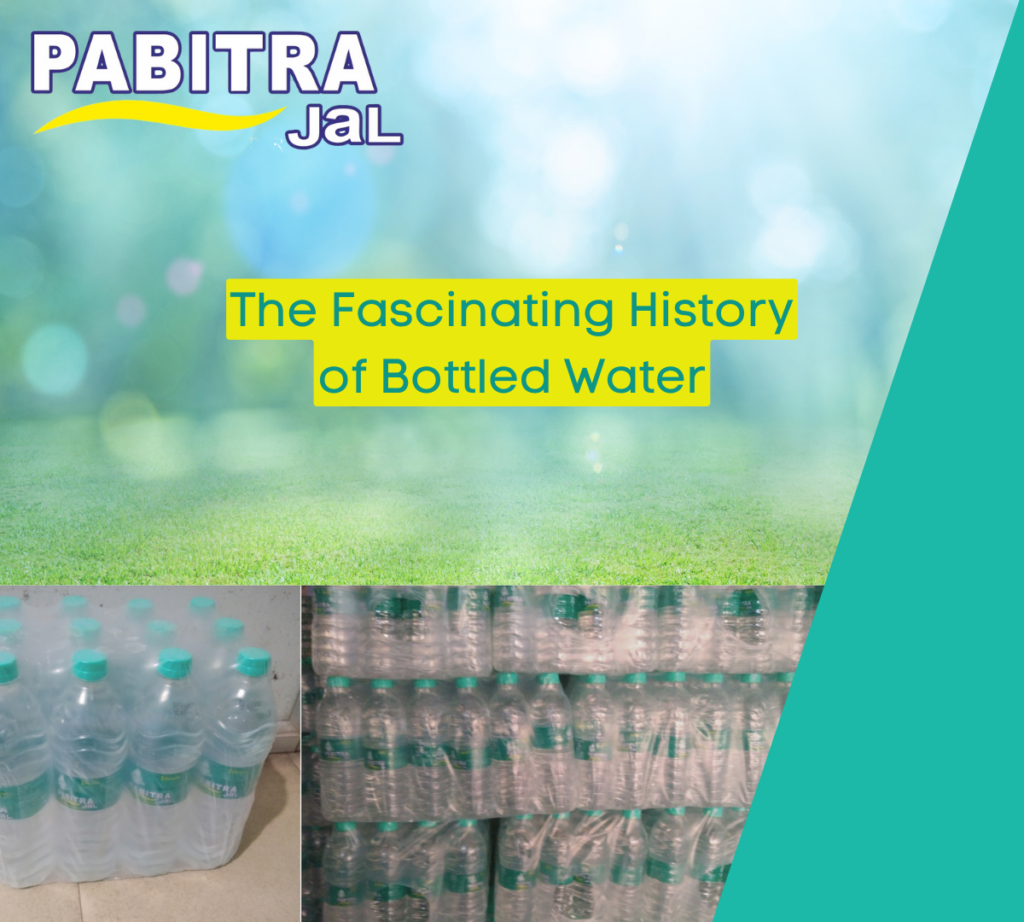

In today’s fast-paced world, bottled water has become an essential part of our daily lives. From gym bags to boardrooms, it has become a ubiquitous companion for hydration. Thousands of brands and types are available on store shelves around the globe. But have you ever wondered about the origins of this seemingly simple product? Let’s embark on a journey to explore the fascinating history of bottled water, tracing its origins, and cultural significance.
The concept of bottled water is not as modern as one might think. The practice of storing water in containers dates back to ancient civilizations. Early civilizations such as the Greeks, Romans, and Egyptians stored water in vessels made from materials like clay, animal skins, and even glass. These vessels served not only as containers but also as symbols of wealth and status, with ornate designs adorning some of the more affluent households. It was mainly the Romans who devised a method of piping water from its source to places where it was needed.
The first known commercial bottling of water dates back to 1622. The ‘Holy Well’ in England, is considered the first commercial Bottled water company. Back then, bottled water wasn’t about convenience; it was about perceived health benefits. People flocked to natural springs, believing the mineral-rich water held curative powers. Bottled versions allowed these mineral-rich waters to reach a wider audience. This gave rise to the first commercial bottling. Across the Atlantic, colonists in America shared this fascination with spa water. In 1767, ‘Jackson’s Spa’ in Boston began bottling water from their popular spring, making it the first commercially available bottled water in the US. Around the same time, the company ‘Schweppes’ in Geneva began bottling natural spring water for sale to the public.
In the late 18th century, carbonation techniques were developed, leading to the creation of sparkling water. This fizzy variation quickly gained popularity, especially in Europe, where it became associated with luxury and sophistication. The 19th century saw significant advancements in bottling technology. Innovations in glassmaking, bottling machinery, and transportation facilitated the large-scale production and distribution of bottled water. Glass became the preferred material for bottles, and the invention of the crown cap made sealing bottles more efficient. This period also witnessed the commercialization of bottled water.
While glass bottles were indeed a popular choice, the fragility and weight of glass limited its practicality. The 20th century ushered in a new era. Affordable plastic bottles arrived in 1968, making larger volumes portable and practical. Perrier’s clever marketing campaign in the late 1960s further fuelled the trend, associating bottled water with a sophisticated and healthy lifestyle.
In the early 20th century, brands like Perrier and Evian emerged as pioneers in the bottled water industry. Marketing campaigns played a significant role here. With clever marketing campaigns, bottled water became more than just a drink; it transformed into a symbol of lifestyle choice. These campaigns tapped into consumers’ aspirations for wellness and sophistication, making bottled water a desirable choice.
Today, the bottled water industry is a multi-billion dollar giant. Convenience, safety concerns about tap water, and clever marketing have all contributed to its immense popularity.
While bottled water consumption has continued to soar, concerns regarding its environmental impact have also begun to surface. The proliferation of single-use plastic bottles has led to pollution of oceans and landfills, prompting calls for greater sustainability in the industry. As a result, many companies are shifting to more eco-friendly packaging and better-quality PET bottle preforms to minimize their environmental footprint.
Despite the criticisms and challenges faced by the bottled water industry, it has also played a significant role in addressing certain global issues. In regions where clean drinking water is scarce or unsafe, bottled water can provide a necessary source of hydration. It also plays a crucial role in disaster relief efforts, providing safe drinking water in times of crisis.
The history of bottled water is a testament to mankind’s persistent need for hydration, good health, and convenience. As we look to the future, it is essential to balance convenience and sustainability. To ensure that future generations can continue to enjoy the benefits of clean, refreshing water without harming the environment.
This post merely scratches the surface of the history of bottled water. There’s so much more to learn. How bottled water came to be, the rise of major brands, the science behind mineral water, and the ongoing debate about its environmental impact. So, the next time you unscrew a cap or peel off a seal, take a moment to ponder the centuries-old story contained in that simple vessel of bottled water. Cheers to the history that quenches our thirst and satisfies our curiosity!
For any query related to bottled water, please click the below button.
